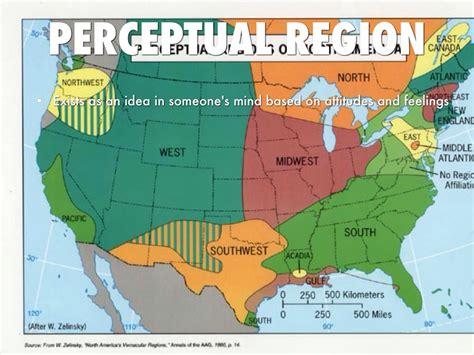What is a Region?

In the realm of AP Human Geography, a region can be defined as an area of the Earth’s surface that shares common characteristics, such as physical, cultural, or economic features. It is a contiguous space that is distinct from its surroundings, but may also be subdivided into smaller, more specific regions.
Types of Regions
Geographers recognize several types of regions, each based on specific criteria:
- Formal Regions: Defined by a single, unifying characteristic, such as climate, language, or political borders.
- Functional Regions: Centered around a particular economic activity or function, such as a manufacturing zone or a transportation hub.
- Perceptual Regions: Based on people’s perceptions and experiences, rather than objective criteria. These often reflect cultural or historical associations.
- Vernacular Regions: Local areas with unique names and identities, often based on historical or cultural traditions.
Importance of Regions
Regions provide a framework for studying the world’s diverse landscapes and human interactions. By examining regions, geographers can:
- Identify patterns and trends: Regions help identify similarities and differences between places, allowing geographers to draw generalizations.
- Understand complex relationships: Regions offer a platform for exploring the interconnections between physical and human environments.
- Develop informed policies: Regional analysis provides valuable insights for policymakers, enabling them to make data-driven decisions.
Examples of Regions
- The European Union: A formal region defined by political borders and a shared political and economic system.
- The Amazon Basin: A functional region centered around the Amazon River system, supporting abundant biodiversity and economic activities.
- The Rust Belt: A perceptual region in the United States, known for its declining heavy industry.
- Kashmir: A vernacular region, with a distinct cultural and linguistic identity, disputed between India and Pakistan.
Keywords
- Contiguous
- Distinctive
- Common characteristics
- Formal
- Functional
- Perceptual
- Vernacular
Statistics
- According to the United Nations, there are over 200 countries in the world, each representing a formal region.
- The largest functional region in terms of population is the Asia-Pacific region, home to over 4 billion people.
- Perceptual regions can vary widely in size, from small neighborhoods to entire continents.
- Vernacular regions often have strong cultural and linguistic ties, as in the case of the Basque Country in Spain.
Applications
The concept of region has numerous applications in various fields:
- Urban planning: Regions provide a framework for zoning and land use planning.
- Economic development: Targeting regions with specific economic characteristics can enhance efficiency and effectiveness.
- Environmental conservation: Regions with shared environmental challenges can collaborate on management and protection efforts.
- Disaster management: Regions with similar risk profiles can benefit from shared preparedness and response strategies.
Table 1: Types of Regions
| Type | Description | Examples |
|---|---|---|
| Formal | Single unifying characteristic | European Union |
| Functional | Centered around an economic activity | Manufacturing zone |
| Perceptual | Based on perceptions and experiences | Rust Belt |
| Vernacular | Unique local identity | Basque Country |
Table 2: Examples of Regions
| Region | Type | Characteristics |
|---|---|---|
| Amazon Basin | Functional | Abundant biodiversity, economic activities |
| India | Formal | Political borders, shared history |
| Southwest United States | Perceptual | Desert landscapes, cowboy culture |
| Alsace-Lorraine | Vernacular | Distinct language, cultural heritage |
Table 3: Importance of Regions
| Importance | Description | Benefits |
|---|---|---|
| Identifying patterns and trends | Generalizations about places | Informed decision-making |
| Understanding complex relationships | Interconnections between environments | Sustainable resource management |
| Developing informed policies | Data-driven decisions | Effective regional planning |
Table 4: Applications of Regions
| Application | Field | Benefits |
|---|---|---|
| Urban planning | Zoning, land use | Efficient resource allocation |
| Economic development | Targeted investments | Enhanced growth and job creation |
| Environmental conservation | Shared management strategies | Biodiversity protection, ecosystem health |
| Disaster management | Coordinated preparedness and response | Reduced risk, improved resilience |
1. What is the difference between a region and a place?
A place is a specific location, while a region is a broader area with common characteristics.
2. How can regions change over time?
Regions can evolve due to factors such as political boundary changes, economic development, or cultural shifts.
3. What are some examples of global regions?
North America, South America, Europe, Asia, Africa, Antarctica, and Oceania.
4. How do regions contribute to global interconnectedness?
Regions facilitate trade, travel, and cultural exchange, fostering economic growth and global cooperation.
5. What are the challenges associated with regionalism?
Regionalism can sometimes lead to conflicts over resources, territorial disputes, or cultural differences.
6. How can regions promote sustainable development?
Regions can collaborate on shared environmental challenges, such as climate change mitigation or pollution control.
7. What is the role of technology in shaping regions?
Technology advancements can connect regions and facilitate economic activities, but also create regional disparities.
8. How can we use regional geography to address global issues?
Understanding regional dynamics and perspectives can help develop solutions to challenges such as poverty, inequality, and environmental degradation.
